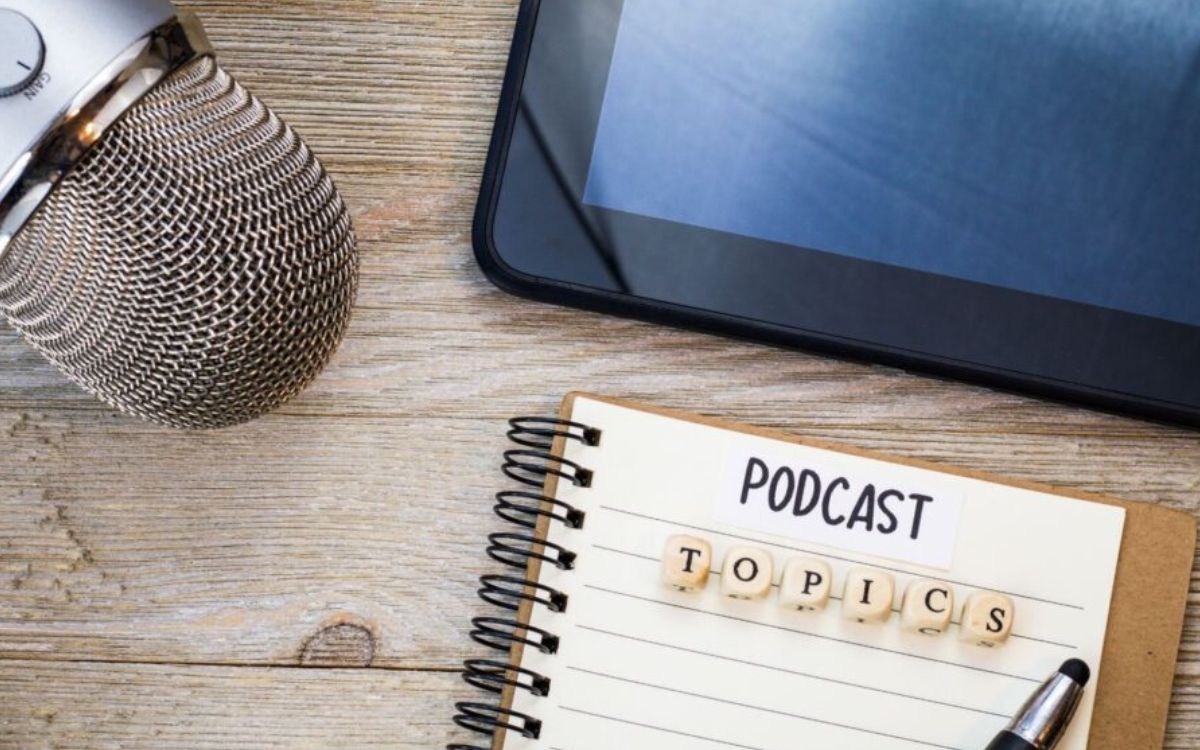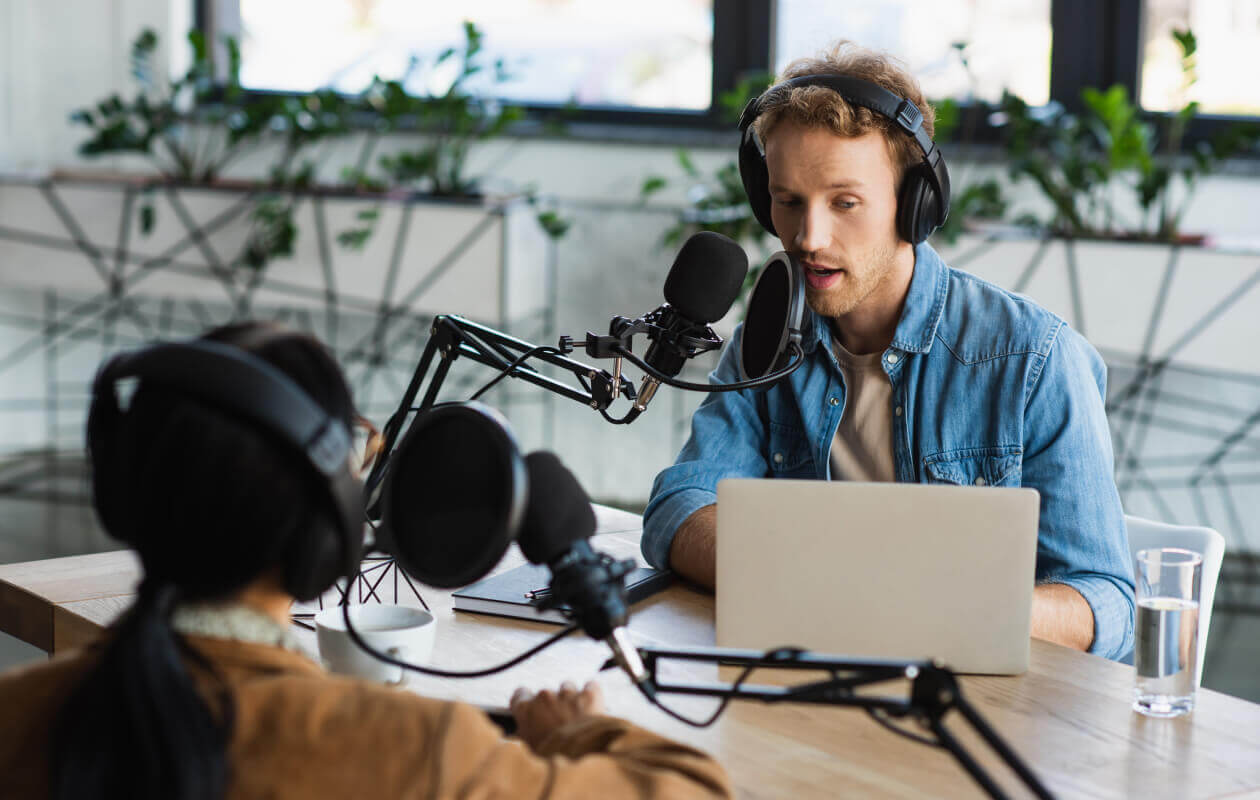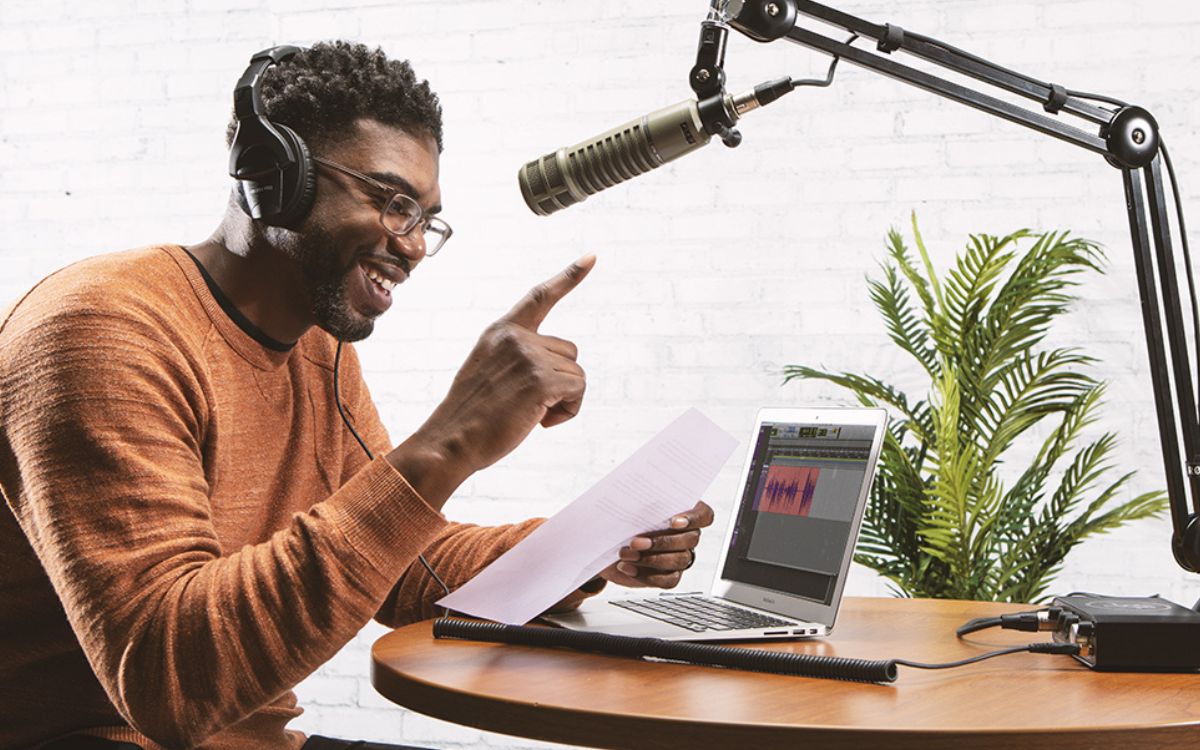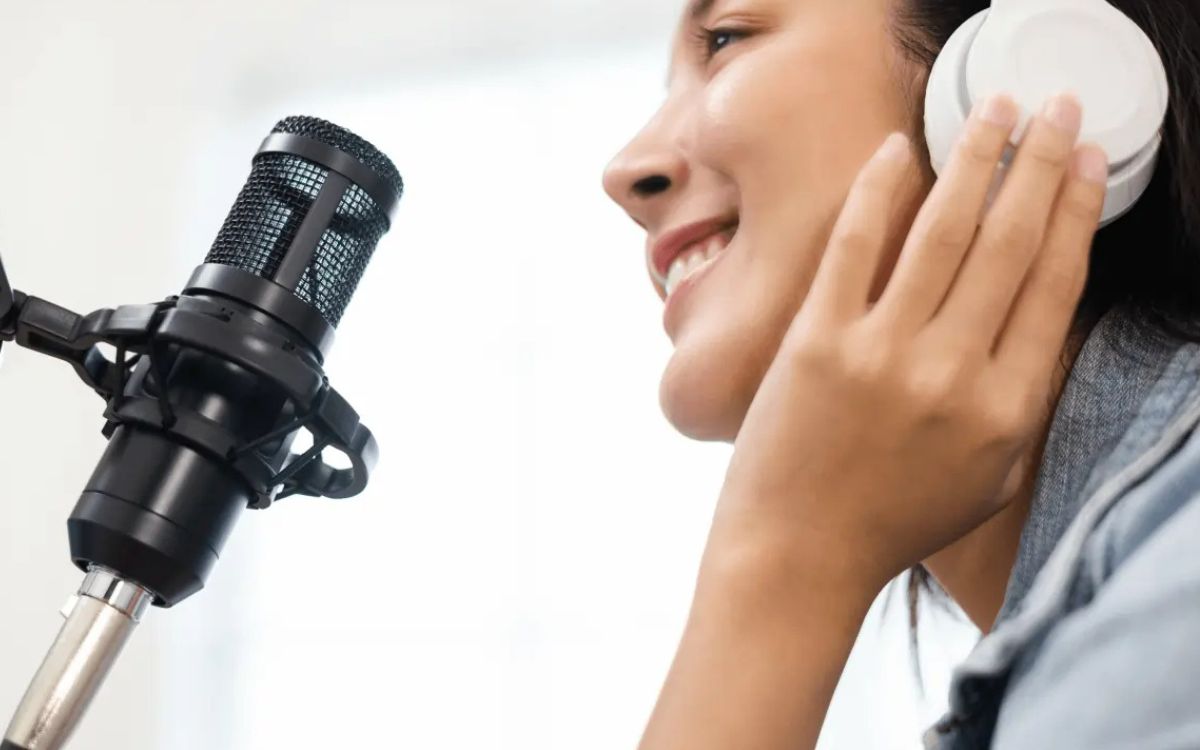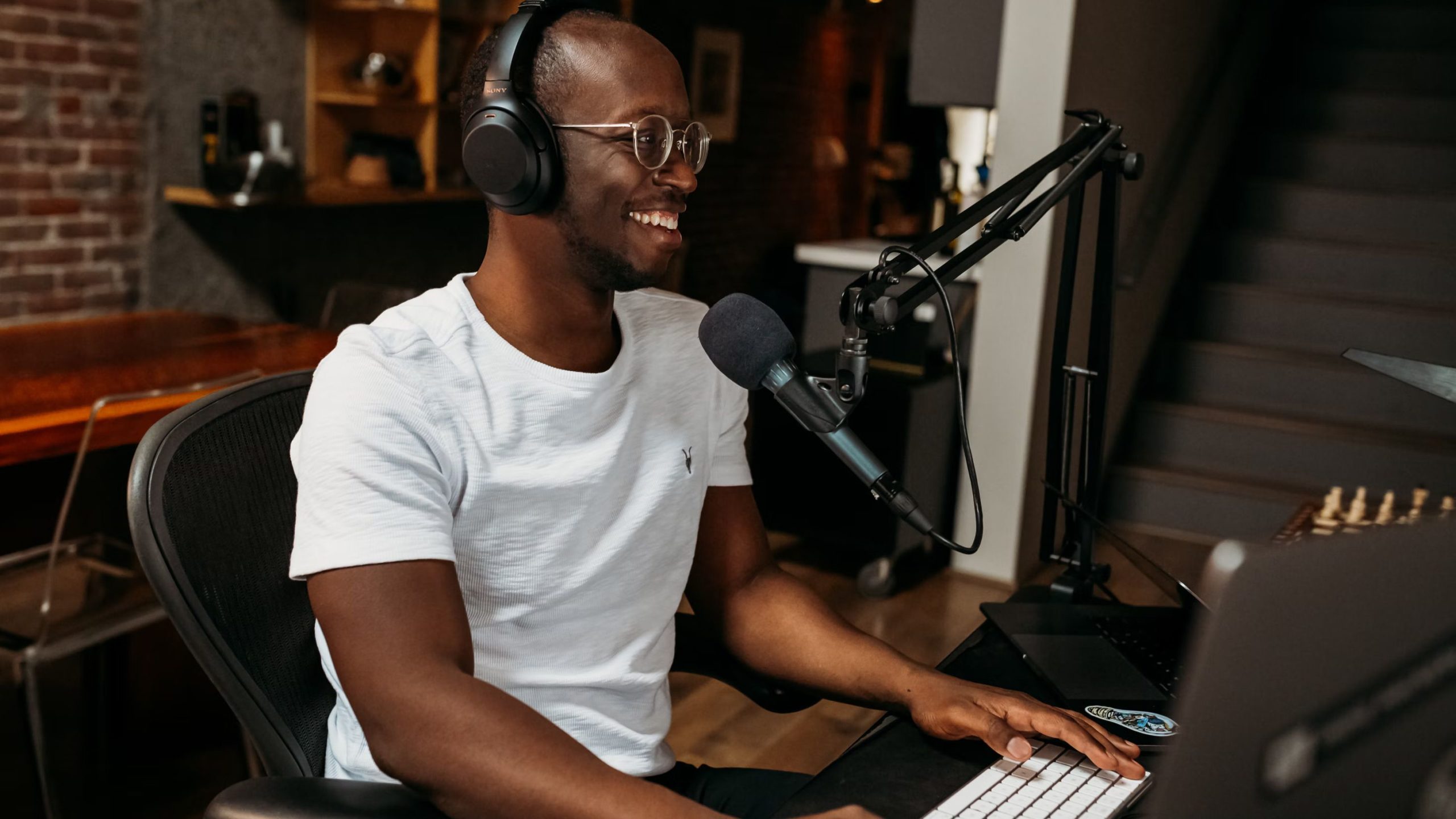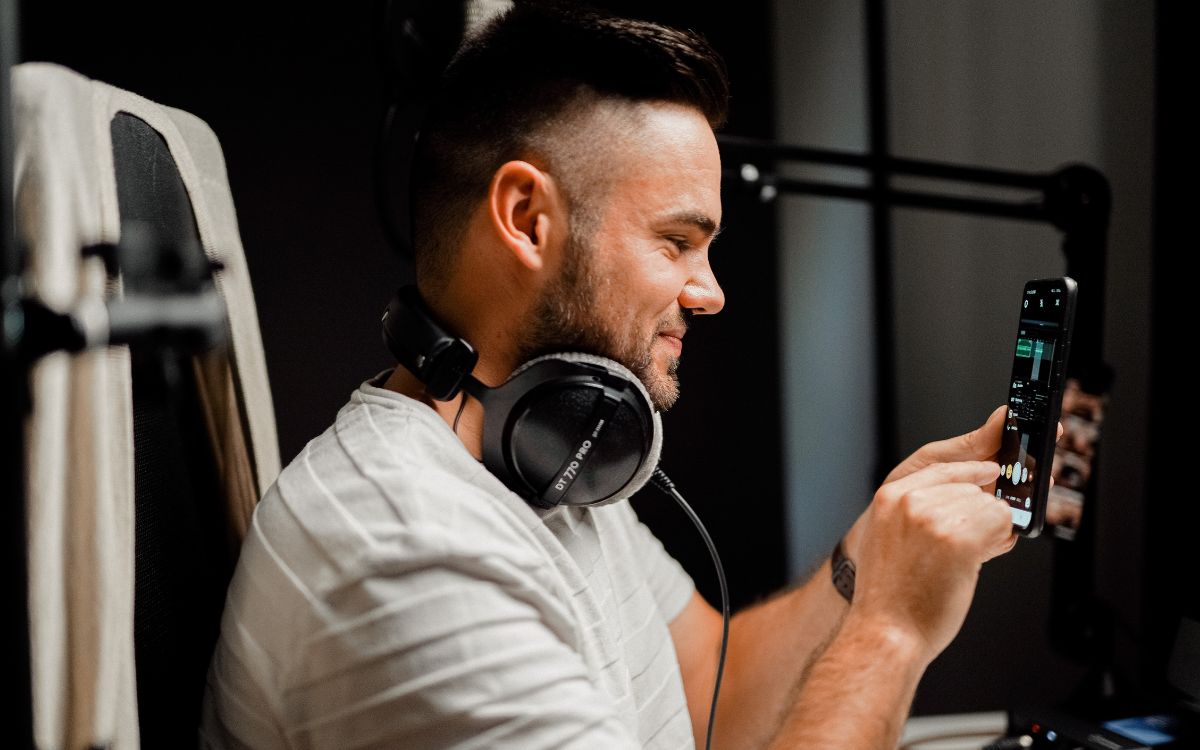Home>Events & Info>Podcast>How To Do Video Podcast
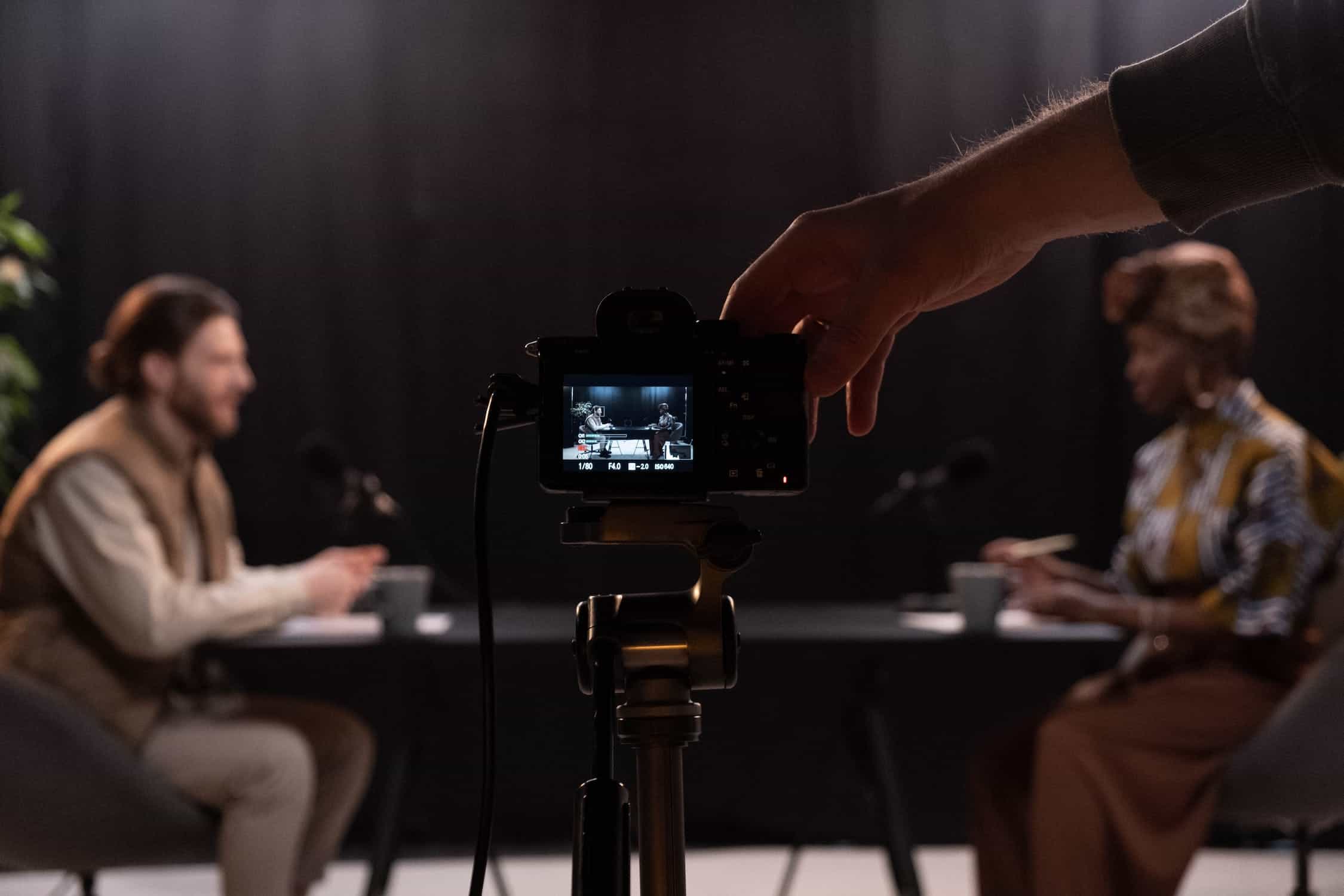

Podcast
How To Do Video Podcast
Modified: January 26, 2024
Learn how to create and host your own video podcast with this comprehensive guide. Explore the tips, tools, and techniques needed to launch a successful podcast and engage your audience.
(Many of the links in this article redirect to a specific reviewed product. Your purchase of these products through affiliate links helps to generate commission for AudioLover.com, at no extra cost. Learn more)
Table of Contents
- Introduction
- Step 1: Choosing a Topic for Your Video Podcast
- Step 2: Planning and Scripting Your Video Podcast
- Step 3: Gathering the Necessary Equipment
- Step 4: Setting Up the Recording Environment
- Step 5: Recording Your Video Podcast
- Step 6: Editing Your Video Podcast
- Step 7: Adding Graphics, Effects, and Music
- Step 8: Exporting and Rendering Your Video Podcast
- Step 9: Uploading and Promoting Your Video Podcast
- Conclusion
Introduction
Welcome to the world of video podcasting! In today’s digital age, podcasts have become immensely popular for their ability to entertain, educate, and connect with audiences on a personal level. While audio podcasts have been the go-to choice for many content creators, video podcasts offer a unique and engaging way to connect with your viewers.
A video podcast combines the power of visual storytelling with the convenience of podcasting, allowing you to showcase your content in a dynamic and immersive format. Whether you’re a seasoned podcaster looking to add a visual element to your show or a newcomer eager to share your passions and expertise, this guide will walk you through the process of creating a compelling video podcast.
With video podcasts, you have the opportunity to captivate your audience with not only your voice but also your visuals. Whether it’s demonstrating a process, showcasing a product, or conducting interviews, video podcasting allows for a more engaging and interactive experience.
However, diving into video podcasting may seem intimidating at first. From choosing your topic to promoting your podcast, there are several steps involved in creating and sharing a successful video podcast. But fear not! In this guide, we’ll break down each step, providing you with the knowledge and tools to create high-quality, professional-looking video podcasts.
So, if you’re ready to take your podcasting game to the next level and engage your audience in a whole new way, let’s get started with the first step: choosing a topic for your video podcast.
Step 1: Choosing a Topic for Your Video Podcast
When it comes to creating a video podcast, the first and most crucial step is choosing a topic that not only interests you but also resonates with your target audience. Your topic should align with your expertise, passion, and the content you enjoy creating.
Begin by brainstorming topics that you are knowledgeable and passionate about. Consider your areas of expertise, hobbies, or even current trends that could make for interesting discussions. It’s important to choose a topic that allows you to provide valuable insights and engage your audience.
Market research is also crucial in determining the viability of your podcast topic. Identify your target audience and understand their needs, interests, and preferences. Look for gaps or unexplored areas within your niche that you can fill with your video podcast.
While it’s essential to choose a topic that appeals to your audience, don’t forget to consider your own interests and passions. Creating content that you enjoy will not only make the process more enjoyable, but it will also reflect in your delivery and engagement with your viewers.
Once you have a few potential topics in mind, narrow them down by evaluating their sustainability and potential for growth. Ask yourself if the topic has a broad enough scope to cover multiple episodes and if there is enough ongoing interest and demand in that particular subject.
Additionally, consider the competition within your chosen topic. Is there a saturated market with countless podcasts covering the same subject? If so, think about how you can differentiate your podcast and provide a unique perspective or angle.
Ultimately, the goal is to find a topic that strikes a balance between your passion, expertise, audience interest, and the potential for growth. Remember, your topic sets the foundation for your entire podcast, so take the time to choose wisely.
Now that you have chosen your topic, it’s time to move on to the planning and scripting phase. In the next step, we’ll explore how to structure and outline your video podcast for maximum impact.
Step 2: Planning and Scripting Your Video Podcast
Planning and scripting your video podcast is a crucial step that sets the groundwork for a successful recording and delivery. By organizing your thoughts and creating a well-structured script, you can ensure a smooth flow of content and effectively convey your message to your audience.
Start by outlining the main points you want to cover in your video podcast. This will help you establish the structure and flow of your episode. Consider breaking down your content into segments or chapters to keep your viewers engaged and make it easier for them to follow along.
Next, delve into each segment and brainstorm specific topics or ideas to discuss. This will provide you with a framework to guide your conversation during recording. It’s important to strike a balance between structure and spontaneity, allowing room for natural conversation and improvisation while staying on track.
Once you have your outline prepared, it’s time to create a script. Writing a script can help you stay focused, maintain a consistent tone, and ensure that all necessary information is covered. However, keep in mind that your script should act as a guide rather than a rigid script to read word-for-word. The key is to sound natural and conversational.
When scripting, consider incorporating interactive elements such as questions, prompts, or audience participation to engage your viewers and encourage them to interact with your content. This can be particularly effective in video podcasts, as it adds a personal touch and strengthens the connection with your audience.
In addition to the script, consider creating visual cues or notes to accompany your video podcast. These cues can serve as reminders for key points, transitions, or any visual elements you plan to incorporate during editing. Visual cues can help you maintain a professional and cohesive presentation.
Remember, while planning and scripting are vital, it’s also important to remain flexible and open to unexpected moments during recording. Embrace the authenticity and organic nature of live conversations to keep your video podcast engaging and relatable.
With your topic chosen and your plan and script in place, you’re ready to move on to the next step: gathering the necessary equipment to ensure a high-quality video podcast recording.
Step 3: Gathering the Necessary Equipment
Now that you have your topic and script ready, it’s time to gather the necessary equipment for a professional-looking video podcast. The right equipment will not only ensure high-quality audio and video but also help you create a visually appealing and engaging podcast for your viewers.
Here are the essential pieces of equipment you’ll need for your video podcast:
- Camera: Invest in a good-quality camera that can capture clear and crisp video. A DSLR camera or a high-resolution smartphone with a good camera can work well for video podcasting.
- Microphone: Clear and high-quality audio is crucial for a successful video podcast. Consider using a dedicated microphone for optimal sound quality. A USB microphone or a shotgun microphone can be great options.
- Lighting: Proper lighting can significantly enhance the visual quality of your video podcast. Invest in softbox lights or LED panels to ensure even and well-lit scenes.
- Tripod or Mounting System: Stabilize your camera setup with a tripod or a mounting system to avoid shaky footage and maintain a professional appearance.
- Backdrop or Setting: Create an appealing backdrop or setting for your video podcast. This could be a dedicated podcasting studio, an aesthetically pleasing corner of your room, or a green screen setup for adding virtual backgrounds during editing.
- Computer or Editing System: You’ll need a reliable computer or editing system to edit and refine your video podcast. Ensure that it meets the recommended specifications for video editing software.
- Editing Software: Choose a video editing software that suits your needs and skill level. Adobe Premiere Pro, Final Cut Pro, and iMovie are popular options with a range of features and functionalities.
While having high-quality equipment can enhance the visual and audio aspects of your video podcast, it’s important to remember that content and delivery are still key. Don’t let equipment limitations discourage you from creating and sharing valuable content.
If you’re just starting out or have a limited budget, don’t worry! Many smartphones today have impressive camera capabilities, and there are affordable microphone options available that can still produce good audio quality. Improvise with your existing resources and gradually upgrade your equipment as your podcast grows.
With the necessary equipment in your arsenal, you’re now ready to set up your recording environment and begin capturing your video podcast. In the next step, we’ll explore how to create an optimal recording space for your podcast.
Step 4: Setting Up the Recording Environment
The recording environment plays a crucial role in ensuring a high-quality video podcast. By setting up the right environment, you can minimize distractions, optimize audio and lighting conditions, and create a professional and visually appealing backdrop for your podcast.
Here are some key considerations for setting up your recording environment:
- Choose a quiet and controlled space: Find a location where you can minimize background noise and control external distractions. Select a room with good sound insulation or consider using soundproofing materials or sound-absorbing panels.
- Avoid echo and reverberation: Large empty rooms or spaces with hard surfaces can create echo and reverberation, affecting the audio quality of your podcast. Add furniture, carpets, or acoustic panels to reduce echo and achieve a cleaner sound.
- Ensure adequate lighting: Proper lighting is essential for a visually appealing video podcast. Utilize natural lighting from windows or invest in artificial lights to evenly illuminate your recording space. Avoid harsh shadows or strong backlighting that can obscure your face or create distractions.
- Consider your backdrop: Choose a backdrop that is visually appealing and relevant to your podcast topic. It could be a plain wall, a bookshelf, or a customized backdrop with branding or visuals. Ensure that your backdrop remains consistent across episodes for a cohesive look.
- Set up your camera and microphone: Position your camera at eye level or slightly above to create an engaging perspective. Place your microphone within easy reach and adjust its position for optimal audio capture. Test the audio and video settings to ensure they are working properly.
- Eliminate clutter and distractions: Remove any clutter or distractions from your recording space. Keep the focus on you and your content. Consider using a teleprompter for easy reference to stay on script and maintain eye contact with the camera.
Remember, the goal is to create a professional and distraction-free environment that allows you to deliver your content effectively. Take the time to fine-tune your recording setup, conduct test runs, and make adjustments as needed.
Setting up your recording environment is an important step in ensuring a visually and audibly pleasing video podcast. With a well-prepared environment, you’re now ready to move on to the exciting part – recording your video podcast. In the next step, we’ll explore tips and techniques for capturing high-quality footage and audio.
Step 5: Recording Your Video Podcast
With your recording environment set up and equipment ready, it’s time to embark on the exciting journey of recording your video podcast. This step is where your planning and preparation come to life as you engage with your audience through captivating visuals and compelling content.
Here are some tips and techniques to help you capture high-quality footage and audio during your video podcast recording:
- Warm-up and prepare: Before hitting the record button, take a few moments to warm up your voice and relax. Practice your opening lines and get into the right mindset to deliver your content with confidence and enthusiasm.
- Maintain eye contact: Connect with your audience by maintaining eye contact with the camera. This will create a more personal and engaging experience for your viewers, making them feel involved in the conversation.
- Speak clearly and concisely: Enunciate your words clearly and avoid excessive filler words or long pauses. Keep your sentences concise and to the point. This will help your viewers better understand and retain the information you’re sharing.
- Be mindful of body language: Pay attention to your body language throughout the recording. Sit or stand up straight, use hand gestures to emphasize key points, and maintain an open and engaged posture. Your body language can enhance your presentation and make it more dynamic.
- Take breaks and review: If needed, feel free to take short breaks during the recording to review your script or make adjustments. This can help maintain the flow and quality of your podcast. Remember, it’s okay to edit out any mistakes or retakes during the editing process.
- Inject personality and authenticity: Let your personality shine through during the recording. Be yourself, show enthusiasm for your topic, and inject personal anecdotes or stories to connect with your audience on a deeper level.
- Stay focused and spontaneous: While it’s important to follow your script and stay on track, don’t be afraid to be spontaneous. Allow room for natural conversation, react to unexpected moments, and engage in dynamic discussions with guests or co-hosts.
- Monitor audio levels: Keep an eye on your audio levels throughout the recording. Ensure that your voice is clear and audible without any distortions or background noise interference. Make necessary adjustments as needed.
- Record multiple angles (optional): If you have multiple cameras at your disposal, consider capturing your podcast from different angles. This can add visual interest and provide flexibility during the editing process.
Remember, the recording process may take some time to get comfortable and find your rhythm. Don’t be discouraged by minor mistakes or imperfections. With practice and experience, your video podcast recordings will become more polished and engaging.
Once you’re satisfied with the recording, it’s time to move on to the next step – editing your video podcast. In the following step, we’ll explore tips and techniques to refine your footage and create a visually captivating podcast episode.
Step 6: Editing Your Video Podcast
Editing is where the magic happens in creating a polished and professional-looking video podcast. During this step, you have the opportunity to refine your footage, add visual enhancements, and craft a cohesive and engaging episode that captivates your audience.
Here are some tips and techniques to help you edit your video podcast:
- Organize your footage: Start by organizing your footage and audio files. Create a folder structure that makes it easy to locate and access your media files during the editing process. This will save you time and keep your workflow efficient.
- Trim and cut: Begin by trimming the excess footage and removing any mistakes, long pauses, or irrelevant segments. Cut out any repetitive or unnecessary content to keep the episode concise and engaging.
- Add graphics and visuals: Enhance your video podcast by adding graphics, lower thirds, or overlays that display relevant information. This can include your podcast logo, guest names, topic titles, or any additional visual elements that complement your content.
- Include B-roll footage: Incorporate B-roll footage to add visual interest and variety to your video podcast. B-roll can include shots of your surroundings, product demonstrations, relevant images, or footage that complements the discussion. This helps break up the visuals and keeps viewers engaged.
- Optimize audio: Improve the audio quality by adjusting levels, removing background noise, and applying equalization or compression as needed. Ensure that your voice and any accompanying music or sound effects are clear and well-balanced.
- Add transitions: Smoothly transition between different segments or topics using various transition effects. This helps maintain a seamless flow and enhances the visual appeal of your video podcast.
- Implement color correction and grading (optional): If you’re aiming for a specific visual aesthetic, consider color correcting and grading your footage. This process can enhance the overall look and mood of your video podcast, making it more visually appealing.
- Include captions or subtitles (optional): Make your video podcast accessible to a wider audience by including captions or subtitles. This ensures that viewers can understand your content even in noisy environments or for those who are hearing impaired.
- Add music and sound effects (optional): Enhance the mood and atmosphere of your video podcast by incorporating background music or sound effects. Choose music or sound effects that complement your content and create a cohesive audio-visual experience.
Take your time during the editing process and pay attention to small details. Experiment with different editing techniques and effects to find the style that aligns with your podcast’s theme and your personal preferences.
Once you’re satisfied with the final edit, it’s time to move on to the next step – adding graphics, effects, and music to elevate your video podcast. In the following step, we’ll explore how to enhance your podcast visually and sonically.
Step 7: Adding Graphics, Effects, and Music
In this step, you’ll take your video podcast to the next level by adding graphics, effects, and music. These visual and sonic elements will enhance the overall production value of your podcast, captivate your audience, and create a memorable viewing experience.
Here are some key considerations when adding graphics, effects, and music to your video podcast:
- Branding and Visual Identity: Incorporate your podcast’s branding elements such as logos, colors, and fonts throughout the video. Consistent branding builds recognition and helps create a cohesive visual identity for your podcast.
- Lower Thirds and Title Cards: Use lower thirds or title cards to introduce your guests, display topic titles, or provide additional context during the podcast. These graphics not only add professionalism but also make it easier for viewers to follow along.
- Transitions and Effects: Experiment with various transitions and effects to add visual interest and smooth transitions between different segments or topics. Liven up your video podcast with creative transitions, overlays, or picture-in-picture effects.
- B-roll and Visual Enhancements: Incorporate B-roll footage, images, or graphics to enhance your storytelling, showcase relevant visuals, or provide context to your discussion. B-roll adds depth to your video podcast and keeps viewers engaged.
- Background Music: Add background music that complements the mood and theme of your podcast. Choose music that enhances the overall viewing experience, evokes emotions, or creates the desired atmosphere. Ensure that the music does not overpower your voice.
- Sound Effects: Include sound effects to enhance key moments, transitions, or emphasize certain points in your podcast. Sound effects can create a dynamic and immersive experience, making your video podcast more engaging for viewers.
- Captions and Subtitles: If you haven’t done so already, consider adding captions or subtitles to make your video podcast more accessible to a wider audience. This ensures that viewers can follow along even in noisy environments or if they have hearing impairments.
- Quality Control: Before finalizing your video podcast, review the graphics, effects, and music to ensure that they enhance the content and do not distract or overpower the main message. Ensure that the volume levels are balanced, and all elements are in sync.
Remember, the goal is to strike a balance between visual enhancements and the main content of your podcast. The graphics, effects, and music should complement your message and contribute to an immersive and enjoyable viewing experience.
Once you’re satisfied with the addition of graphics, effects, and music, it’s time to move on to the next step – exporting and rendering your video podcast. In the following step, we’ll explore how to prepare your podcast episode for distribution.
Step 8: Exporting and Rendering Your Video Podcast
Now that you have finished editing your video podcast and added all the desired effects, graphics, and music, it’s time to export and render your final episode. This step prepares your video podcast for distribution across various platforms and ensures compatibility with different devices.
Here are the key steps to exporting and rendering your video podcast:
- Choose an appropriate file format: Determine the file format that best suits your needs and the requirements of your distribution platforms. Popular options include MP4, MOV, and AVI. Consider the video and audio codecs, resolution, and bitrate for optimal quality and compatibility.
- Set the resolution and aspect ratio: Ensure that your video podcast is exported in the correct resolution and aspect ratio. Common resolutions for online distribution include 1080p (1920×1080) and 720p (1280×720). Select the aspect ratio, such as 16:9, that matches your chosen format.
- Configure the video and audio settings: Adjust the video and audio settings based on the requirements of your distribution platforms or personal preferences. This includes choosing the appropriate frame rate, bitrate, audio format, and sample rate.
- Consider file size and compression: Balancing file size and quality is crucial for a smooth streaming experience. Compress your video podcast to an appropriate file size without compromising too much on quality. Utilize video compression techniques and settings to achieve the desired balance.
- Add metadata: Include relevant metadata such as the podcast title, episode number, show notes, and keywords. This metadata helps search engines and podcast directories accurately categorize and display your video podcast when it is published.
- Perform a quality check: Before finalizing the export, thoroughly review the exported episode to ensure that the video and audio are synchronized, there are no glitches or artifacts, and the overall quality is up to standard. Make any necessary adjustments and re-export if needed.
- Choose a destination folder and filename: Select a location on your computer or external storage device to save the exported video podcast. Choose a descriptive and SEO-friendly filename that includes relevant keywords and episode details.
- Export and render the video podcast: Initiate the export and rendering process in your chosen video editing software. The time it takes to export will depend on the length and complexity of your episode as well as the processing power of your computer.
Once the exporting and rendering process is complete, you’ll have a finalized video podcast ready for distribution. However, before sharing your podcast with the world, it’s essential to follow the next and final step – uploading and promoting your video podcast.
Step 9: Uploading and Promoting Your Video Podcast
With your video podcast fully edited, exported, and rendered, it’s time to share it with the world. This final step involves uploading your podcast to relevant platforms and implementing effective promotion strategies to reach your target audience and maximize its visibility.
Follow these steps to effectively upload and promote your video podcast:
- Create a hosting account: Choose a reliable podcast hosting platform that caters specifically to video podcasts. These platforms provide the necessary hosting space and distribution tools to make your podcast accessible to a wide audience.
- Upload your video podcast: Follow the hosting platform instructions for uploading your video podcast. Typically, you will provide the episode’s title, description, artwork, and tags. Some platforms also allow you to embed other relevant information or links.
- Optimize for SEO: Ensure that you optimize your video podcast’s metadata, including the episode title, description, and tags, with relevant keywords related to your content. This will help improve its discoverability in search engines and podcast directories.
- Transcribe your podcast: Consider transcribing your video podcast and adding it as downloadable or readable content. This can improve accessibility, aid search engine optimization, and provide additional value to your audience.
- Embed your podcast on your website: If you have a website or blog, embed the video podcast directly on your site. This enables visitors to easily watch and share your podcast while driving traffic to your website.
- Promote on social media: Leverage the power of social media platforms to promote your video podcast. Share snippets or highlights from your episodes, create eye-catching graphics, and engage with your audience through comments, discussions, and Q&A sessions.
- Collaborate with guests/influencers: Partner with guests or influencers who align with your podcast’s theme or target audience. Collaborative promotions can help you reach a broader audience and tap into their existing fan base for increased exposure.
- Utilize email marketing: Build an email list of interested viewers and use email marketing to notify them about new episodes, behind-the-scenes content, or exclusive offers. A well-crafted email can drive traffic to your video podcast and foster loyalty among your audience.
- Engage with your audience: Interact with your audience on various platforms. Respond to comments, answer questions, and encourage discussions. Engaging with your audience creates a sense of community and fosters loyalty and support for your video podcast.
- Monitor analytics and feedback: Regularly assess metrics such as views, downloads, and engagement rates to gauge the performance and reception of your video podcast. Analyzing feedback and adjusting your content based on audience preferences and trends can help you refine your approach and improve future episodes.
Remember, consistent promotion and engagement are key to growing your video podcast audience. Keep experimenting with different promotion strategies, collaborations, and content formats to attract new viewers and retain existing ones.
Congratulations! You’ve now completed all the essential steps to create, edit, and promote your video podcast. Enjoy the journey, learn from each experience, and continue to refine and evolve your podcasting skills. Happy podcasting!
Conclusion
Congratulations! You have successfully navigated the process of creating a video podcast. From choosing your topic and planning your content to recording, editing, and promoting your episodes, you’ve taken the necessary steps to produce a high-quality and engaging video podcast.
Remember, creating a video podcast is an ongoing journey of learning and improvement. As you continue to produce episodes, you’ll discover new techniques, refine your skills, and find your unique voice in the podcasting world.
While the technical aspects of video podcasting are important, don’t forget that the heart of your podcast lies in creating valuable and compelling content. Focus on delivering meaningful information, telling captivating stories, and making a genuine connection with your audience.
As you embark on your video podcasting adventure, keep these key points in mind:
- Choose a topic that you are passionate about: Your enthusiasm will show through and captivate your audience.
- Plan and script your episodes: Organization and structure will ensure a coherent and engaging podcast.
- Invest in quality equipment: Good audio and video quality contribute to a professional and enjoyable viewing experience.
- Create a welcoming recording environment: Minimize distractions and optimize lighting and sound conditions.
- Edit with care: Enhance your podcast with graphics, effects, and music while ensuring the focus remains on your content.
- Promote and engage: Build your audience through strategic promotion on various platforms and actively engage with your viewers.
Remember, the most important aspect of podcasting is to have fun and enjoy the process. Your passion and authenticity will shine through, making your video podcast a delight for both yourself and your audience.
Now, armed with the knowledge and steps provided in this guide, it’s time to bring your video podcast to life. Embrace the journey, continuously improve, and let your creativity shine as you embark on this exciting venture in the world of video podcasting. Best of luck!

